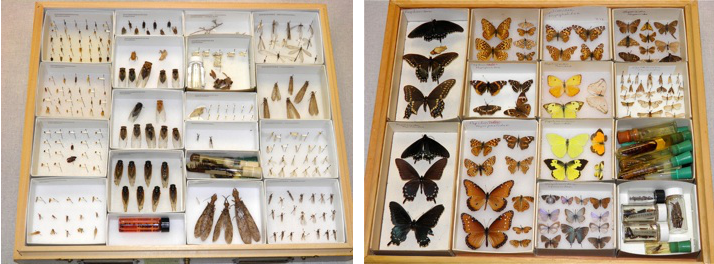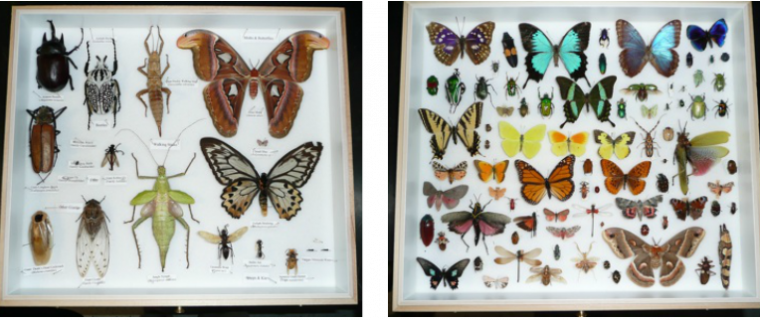The Collection's Mission and Vision
Mission-- The UAIC's mission is to build the world’s best source of arthropod specimens from the Sonoran Desert Region and to be a global center for insect research.
Vision-- The UAIC strives to be the paramount source for fundamental data on arthropods in the Sonoran Desert Region. In so doing, it is dedicated to furthering our understanding of arthropods and the multiple roles they play in shaping and sustaining both natural and managed systems in this region. The UAIC is committed to 1) harboring, protecting, and building a comprehensive collection of arthropod specimens, 2) networking with like-minded institutions to expand, extend, and assemble the base knowledge of these arthropods, 3) providing for the broad availability and enrichment of data associated with these specimens to scientists, policy makers, and the lay public, and 4) harnessing the considerable human resources of the region towards the goal of maintaining these arthropod specimens, fostering their associated data, and assembling this information for interested clientele. Data derived from the specimens are fundamental for understanding the biodiversity and distribution of arthropods in the past, present and future.
Research-- The UAIC provides specimens and data to a wide range of active research programs, both local and abroad, including those focused on evolutionary biology, agricultural & medical entomology, and public education. Currently, several regional and national programs are underway in our area that will make use of the UAIC’s specimens and specimen-level data (e.g. ASAP, SCAN, NEON, MABA). These projects and many other actively affiliated researchers contribute taxonomic expertise and vouchers, making the UAIC a growing repository for current studies and a valuable research and educational resource.
Research Collection-- The UAIC contains approximately 2.0 million insect specimens, labeled and archived for research and reference. Most of these specimens are pinned and curated in Cornell-design cabinets. Significant holdings include Coleoptera (beetles), Hemiptera (true bugs), Lepidoptera (butterflies and moths), and Orthoptera (grasshoppers and crickets). Over 80% of these specimens are identified to the species-level. Hymenoptera (ants, wasps, and bees) are also well represented, but their identification levels vary considerably from family to family. Five hundred thousand specimens of arachnids, crustaceans, termites, ants, and insect larvae are preserved in alcohol. The slide collection includes preparations of over 25,000 mites, 300 thrips, and sizable collections of mosquitos and ant larvae.
Education-- The UAIC maintains an extensive teaching collection used to train undergraduate and graduate students how to identify local arthropods.
Education Collection-- This consists of 72 drawers of insects identified to the family level which are available for students to learn the diagnostic features of the major groups of insects.
Extension--The University of Arizona is the state’s land-grant university. True to the mission of the Morrill Acts of 1862 and 1890, the UAIC has a long history of interacting with the scientific community and the public to help address arthropod issues in agricultural and urban environments.
Outreach--The UAIC participates in outreach to educate the public by providing specimens and interpretive displays, which are presented at schools, lectures, local organizations, and events such as the Department of Entomology’s annual Arizona Insect Festival.
Outreach Collection--Carefully arranged showcases of especially impressive and charismatic specimens are organized by educational themes. These collections are on permanent display in the museum and they are also used for outreach programs and events.



